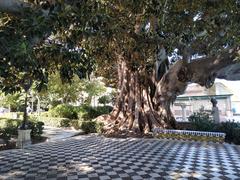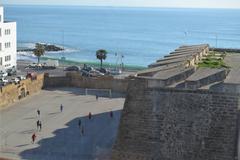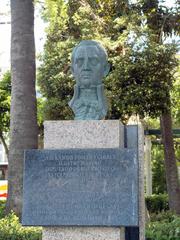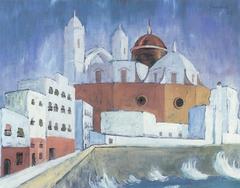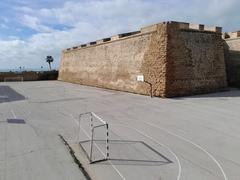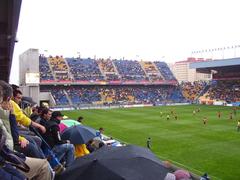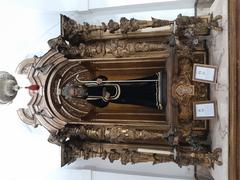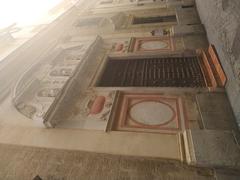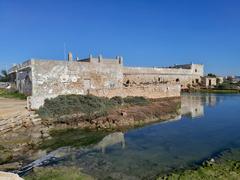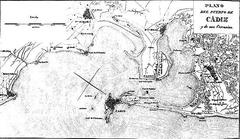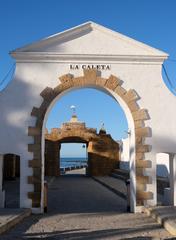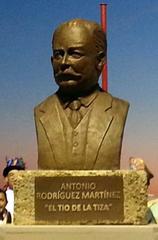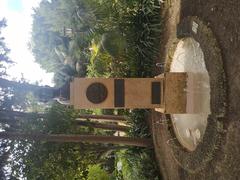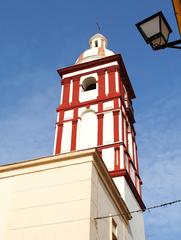Baluarte de los Capuchinos Visiting Hours, Tickets, and Cádiz Historical Sites Guide
Date: 14/06/2025
Introduction
Perched on Cádiz’s scenic southern seafront, the Baluarte de los Capuchinos is a remarkable bastion that embodies the city’s rich maritime and military heritage. Built primarily in the 17th and 18th centuries, this fortress was a vital link in Cádiz’s coastal defenses, designed to protect one of Spain’s most strategic ports from seaborne and land-based threats. Drawing from the military engineering principles of Sébastien Le Prestre de Vauban, the bastion features robust, angular stone walls and strategic sightlines, integrating seamlessly with Cádiz’s wider network of fortifications such as the Baluarte de los Mártires and the Flanco de San Rafael.
More than a military relic, the Baluarte de los Capuchinos is a symbol of Cádiz’s resilience, especially during historic events like the Peninsular War. Today, it serves not only as a monument to past struggles but also as a vibrant community space—hosting cultural events, festivals, and offering panoramic views of the Atlantic and the city skyline. This guide provides detailed visiting information, including hours, accessibility, guided tours, and travel tips, as well as insights into the bastion’s historical and architectural significance. For up-to-date details, consult official resources such as the Cádiz tourism website, MonumentalNet, and Spain.info.
Contents
- Introduction
- Historical Significance and Evolution
- Architectural Design and Features
- Strategic and Cultural Importance
- Visiting Information
- Hours and Tickets
- Accessibility
- Guided Tours and Events
- Directions
- Photography Tips
- Travel Tips and Nearby Attractions
- Preservation Efforts
- Frequently Asked Questions
- Conclusion
- Official Sources
Historical Significance and Evolution
From Coastal Defense to Civic Symbol
Constructed in the 18th century as part of the city’s “Frente del Vendaval” (Windward Front), the Baluarte de los Capuchinos was integral to Cádiz’s defenses against naval attacks, especially during the Peninsular War (1808–1814), when Cádiz resisted French sieges and became the birthplace of the 1812 Spanish Constitution. Its name is derived from the adjacent Capuchin convent, reflecting the historical intertwining of religious, civic, and defensive functions in Cádiz (MonumentalNet).
While much of the original convent was demolished in the 1970s, the bastion and the chapel of the Venerable Third Order remain, standing as enduring landmarks in the city’s cultural and social landscape.
Architectural Design and Features
Vauban Influence and Defensive Engineering
The bastion exemplifies the abaluartada (bastioned) wall system that encircles Cádiz’s historic core, inspired by Vauban’s principles. Key architectural features include:
- Thick, angular masonry walls—designed to resist artillery fire and Atlantic storms.
- Projecting geometry—allows defenders to cover neighboring walls with crossfire, minimizing blind spots.
- Integration with adjacent fortifications—such as the Mártires and San Rafael bastions, creating a continuous defensive line (castillosnet.org).
After significant storm damage in 1765, engineers like Juan Caballero and Tomás Muñoz reinforced the structure, ensuring its endurance against environmental threats (castillosnet.org).
Strategic and Cultural Importance
Defensive Role and Urban Integration
Cádiz’s peninsular geography made it both a target and a stronghold. The Baluarte de los Capuchinos was critical in defending the southern approach and anchoring the city’s seaward fortifications. It formed part of a sophisticated network, including:
- Frente de Tierra (Landward Front)—bastions such as San Roque and Santa Elena.
- Frente Marítimo (Seaward Front)—bastions of Capuchinos, Mártires, and San Rafael.
- Castles of San Sebastián and Santa Catalina—securing the defensive perimeter (castillosnet.org).
Beyond its military purpose, the bastion has evolved into a key communal space, hosting cultural events, open-air concerts, and serving as a focal point during the vibrant Carnaval de Cádiz (turismo.cadiz.es).
Visiting Information
Hours and Tickets
- Opening Hours: Publicly accessible daily from approximately 9:00 AM to 7:00 PM, with extended hours during summer. The outdoor areas are open year-round as part of the Campo del Sur promenade.
- Tickets: Entry to the bastion’s exterior is free; no tickets required for general visits. Occasional special exhibitions or guided tours may require advance booking and a small fee (Official Cádiz Tourism).
Accessibility
- Wheelchair Access: The promenade and main ramparts are generally wheelchair accessible, with paved walkways and ramps. Some sections may have uneven surfaces or steps.
- Assistance: Visitors with mobility challenges can request assistance at the visitor center.
Guided Tours and Events
- Guided Tours: Available through the local tourism office and private operators—especially on weekends, public holidays, and during festival periods.
- Cultural Events: The bastion serves as a venue for open-air concerts, art installations, and historical reenactments, particularly during the Carnaval de Cádiz and summer festivals (Cadiz Cultural Events).
Directions
- Location: Along the Campo del Sur, within walking distance of Cádiz’s historic center.
- Transport: Easily reachable by foot, public bus, or taxi. Parking is available nearby.
Photography Tips
- Best Times: Early morning and late afternoon offer optimal lighting, especially for sunset shots over the Atlantic.
- Photo Opportunities: Capture the dramatic contrast between the stone walls and ocean, as well as city skyline views.
Travel Tips and Nearby Attractions
- Footwear: Wear sturdy shoes for walking on uneven surfaces.
- Facilities: Limited on-site amenities; restrooms and cafés are nearby.
- Combine Visits: Explore nearby sites such as the Cádiz Cathedral, Parque Genovés, and Mercado Central for a full cultural experience.
- Download the Audiala app for self-guided audio tours, event updates, and insider tips.
Preservation Efforts
Cádiz’s local government and heritage organizations continue to maintain and restore the Baluarte de los Capuchinos, balancing public access with conservation. Sustainable tourism helps preserve the bastion for future generations (turismo.cadiz.es).
Frequently Asked Questions (FAQ)
Q: What are the current visiting hours?
A: Daily from 9:00 AM to 7:00 PM, with extended hours in summer.
Q: Is there an entrance fee?
A: No, general access to the bastion is free.
Q: Are guided tours available?
A: Yes, guided tours can be booked through the Cádiz tourism office or private operators.
Q: Is the site wheelchair accessible?
A: The main promenade and ramparts are accessible, though some areas may have steps or uneven surfaces.
Q: What is the best time to visit?
A: Late afternoon or during sunset for the best views and lighting.
Conclusion
The Baluarte de los Capuchinos is not only a testament to Cádiz’s storied military past but also a vibrant emblem of the city’s cultural and social vitality. Its enduring stone walls, panoramic Atlantic vistas, and dynamic community life make it an essential destination for anyone seeking to understand Cádiz’s unique place in Spanish history. Whether you’re a history buff, photographer, or festival enthusiast, this bastion offers a memorable and accessible visitor experience at the crossroads of past and present.
For the latest updates, download the Audiala app, explore related articles, and follow official Cádiz tourism channels.
Alt text: Panoramic sunset view of Baluarte De Los Capuchinos overlooking the Atlantic Ocean in Cádiz.
View interactive map of Baluarte De Los Capuchinos and surrounding Cádiz historical sites
Virtual tour of Cádiz’s coastal fortifications
Explore More Cádiz History
Official Sources and Further Information
- MonumentalNet - Baluarte de los Capuchinos
- CastillosNet - Baluarte de los Capuchinos
- Cádiz Tourism - Bastions and Castles Route
- Official Cádiz Tourism
- Spain.info - Cádiz
- RouteYou - Cádiz Walking Routes
- Wanderlust Chloe - Cádiz Travel Guide
- UNESCO World Heritage - Cádiz
